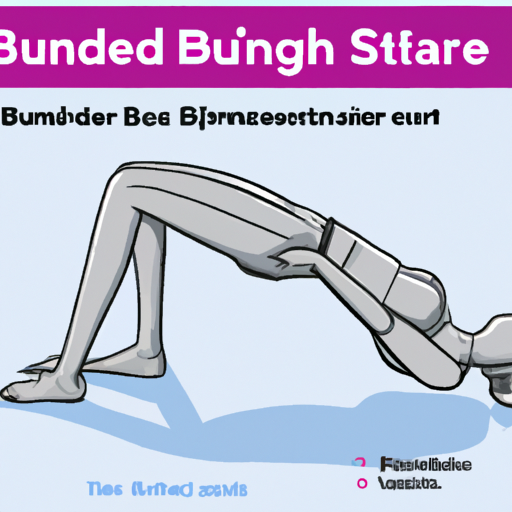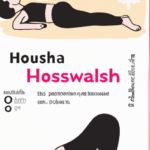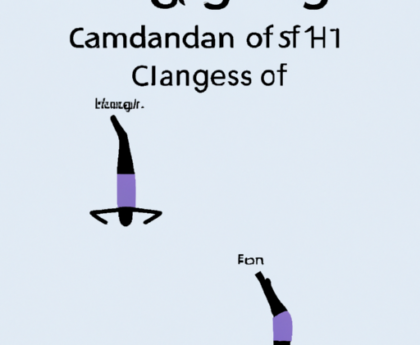“Unlock the power of Setu Bandhasana – Find your inner strength!”
Introduction
Setu Bandhasana, or Bridge Pose, is a yoga pose that is beneficial for both the body and the mind. It is a great pose for stretching the spine, chest, and hips, and it can also help to reduce stress and anxiety. This pose can be done by beginners and experienced yogis alike, and it is a great way to open up the body and create a sense of balance and stability. In this article, we will discuss how to do Setu Bandhasana, the benefits of the pose, and some modifications that can be made to make the pose more accessible.
How to Master Setu Bandhasana (Bridge Pose): A Step-by-Step Guide
Setu Bandhasana, or Bridge Pose, is a restorative yoga pose that can help to reduce stress and tension in the body. It is a great pose for beginners and experienced yogis alike. This step-by-step guide will help you master this pose.
1. Begin by lying on your back with your knees bent and your feet flat on the floor. Place your arms at your sides, palms facing down.
2. Inhale and press your feet and arms into the floor as you lift your hips and lower back off the floor.
3. Keep your thighs parallel and your feet hip-width apart.
4. Lift your chest and draw your shoulder blades together.
5. Hold the pose for five to ten breaths.
6. To release, exhale and slowly lower your hips and back to the floor.
7. Rest in Savasana (Corpse Pose) for a few breaths before continuing with your practice.
By following these steps, you can master Setu Bandhasana and reap the benefits of this restorative pose. Remember to practice with awareness and focus on your breath. With regular practice, you will be able to deepen your pose and experience the full benefits of this pose.
Benefits of Setu Bandhasana (Bridge Pose) for Improved Flexibility and Strength
Setu Bandhasana, or Bridge Pose, is a beneficial yoga pose that can help improve flexibility and strength. This pose is a great way to stretch the spine, chest, and neck, while also strengthening the back and glutes.
The pose begins by lying on the back with the knees bent and the feet flat on the floor. The arms should be placed alongside the body with the palms facing down. The feet should be hip-width apart and the toes should be pointing forward. The next step is to press the feet into the floor and lift the hips up towards the ceiling. The chest should be lifted and the shoulders should be rolled back and down. The chin should be tucked in towards the chest.
The pose should be held for five to ten breaths, and then the hips should be slowly lowered back down to the floor.
Setu Bandhasana can help improve flexibility and strength in the spine, chest, and neck. It can also help to strengthen the back and glutes. This pose can also help to improve posture and reduce stress. Additionally, it can help to improve circulation and digestion.
Overall, Setu Bandhasana is a beneficial pose that can help to improve flexibility and strength. It can also help to reduce stress and improve posture. Practicing this pose regularly can help to improve overall health and wellbeing.
Common Mistakes to Avoid When Doing Setu Bandhasana (Bridge Pose)
Setu Bandhasana, or Bridge Pose, is a beneficial yoga pose that can help to improve posture, reduce stress, and strengthen the spine. However, it is important to practice this pose correctly in order to maximize its benefits and avoid injury. Here are some common mistakes to avoid when doing Setu Bandhasana:
1. Not using props: Props such as blocks and blankets can help to make the pose more comfortable and accessible. If you are a beginner, it is important to use props to ensure that you are doing the pose correctly and safely.
2. Not engaging the core: Engaging the core is essential for this pose. Make sure to draw your navel towards your spine and engage your abdominal muscles to support your lower back.
3. Not keeping the feet parallel: Make sure to keep your feet parallel to each other and hip-width apart. This will help to ensure that your hips are in proper alignment.
4. Not keeping the shoulders relaxed: Make sure to keep your shoulders relaxed and away from your ears. This will help to ensure that your neck and spine are in proper alignment.
5. Not breathing deeply: Make sure to take deep breaths throughout the pose. This will help to relax your body and ensure that you are getting the most out of the pose.
By avoiding these common mistakes, you can ensure that you are doing Setu Bandhasana correctly and safely. With regular practice, you can reap the many benefits of this pose.
How to Use Props to Enhance Your Setu Bandhasana (Bridge Pose) Practice
Props can be a great way to enhance your Setu Bandhasana (Bridge Pose) practice. This pose is a great way to open the chest and shoulders, as well as to strengthen the back and core. By using props, you can make the pose more accessible and comfortable, allowing you to get the most out of your practice.
The first prop you can use is a yoga block. Place the block under your sacrum, the triangular bone at the base of your spine. This will help to lift your hips and chest higher, allowing for a deeper stretch in the chest and shoulders. You can also use a bolster or folded blanket to support your spine and hips. This will help to keep your spine in a neutral position and reduce any strain on your lower back.
Another prop you can use is a strap. Place the strap around your upper arms, just above the elbows. This will help to keep your arms in the correct position and reduce any strain on your shoulders. You can also use a strap to help you deepen the pose. Place the strap around your feet and gently pull your feet towards your body. This will help to open your chest and shoulders even further.
Finally, you can use a wall to help you find the correct alignment in the pose. Place your feet against the wall and press your hips and chest up towards the ceiling. This will help to keep your spine in a neutral position and ensure that your hips are lifted evenly.
By using props, you can make your Setu Bandhasana practice more comfortable and enjoyable. Props can also help you to deepen the pose and get the most out of your practice.
How to Incorporate Setu Bandhasana (Bridge Pose) Into Your Yoga Flow
Setu Bandhasana, or Bridge Pose, is an excellent pose to incorporate into your yoga flow. This pose helps to open the chest and shoulders, while also strengthening the back and core muscles. It can also help to reduce stress and fatigue.
To begin, lie on your back with your knees bent and your feet flat on the floor. Place your arms alongside your body, palms facing down. As you inhale, press your feet into the floor and lift your hips up towards the ceiling. Keep your thighs parallel to each other and your feet hip-width apart.
Once you are in the pose, press your shoulder blades into your back and lift your chest towards the ceiling. Keep your chin slightly tucked in and your gaze towards the ceiling. Hold the pose for five to ten breaths.
To come out of the pose, exhale and slowly lower your hips back to the floor.
Setu Bandhasana can be incorporated into your yoga flow in a variety of ways. You can use it as a transition between poses, or as a way to open up the chest and shoulders before a more challenging pose. You can also use it as a way to end your practice, allowing your body to relax and release any tension.
No matter how you choose to incorporate Setu Bandhasana into your practice, it is sure to be beneficial. This pose can help to open the chest and shoulders, while also strengthening the back and core muscles. It can also help to reduce stress and fatigue. So, give it a try and see how it can benefit your practice!
How to Use Setu Bandhasana (Bridge Pose) to Improve Your Posture
Setu Bandhasana, or Bridge Pose, is an excellent yoga pose for improving posture. It is a simple pose that can be done by anyone, regardless of their level of experience with yoga.
To begin, lie on your back with your knees bent and your feet flat on the floor. Place your arms at your sides, palms facing down. Inhale and press your feet and arms into the floor as you lift your hips and chest off the floor. Keep your thighs parallel to each other and your feet hip-width apart.
Once you are in the pose, focus on lengthening your spine and drawing your shoulder blades together. Keep your chin slightly tucked and your neck long. Hold the pose for five to ten breaths.
Setu Bandhasana helps to strengthen the muscles of the back, neck, and shoulders, which can help to improve posture. It also helps to open the chest and shoulders, which can help to reduce tension in the upper body.
When practicing Setu Bandhasana, it is important to keep the pose safe and comfortable. If you feel any pain or discomfort, come out of the pose and rest. It is also important to practice the pose with proper alignment to ensure that you are getting the most out of the pose.
By practicing Setu Bandhasana regularly, you can improve your posture and reduce tension in your upper body. This pose is a great way to start your day and can help to set the tone for the rest of your day.
Conclusion
Setu Bandhasana (Bridge Pose) is a great pose for strengthening the core, improving posture, and relieving stress. It can be done by anyone, regardless of their level of experience. It is important to remember to keep the spine and neck in alignment, and to keep the breath steady and relaxed. With regular practice, this pose can help to improve overall health and wellbeing.




